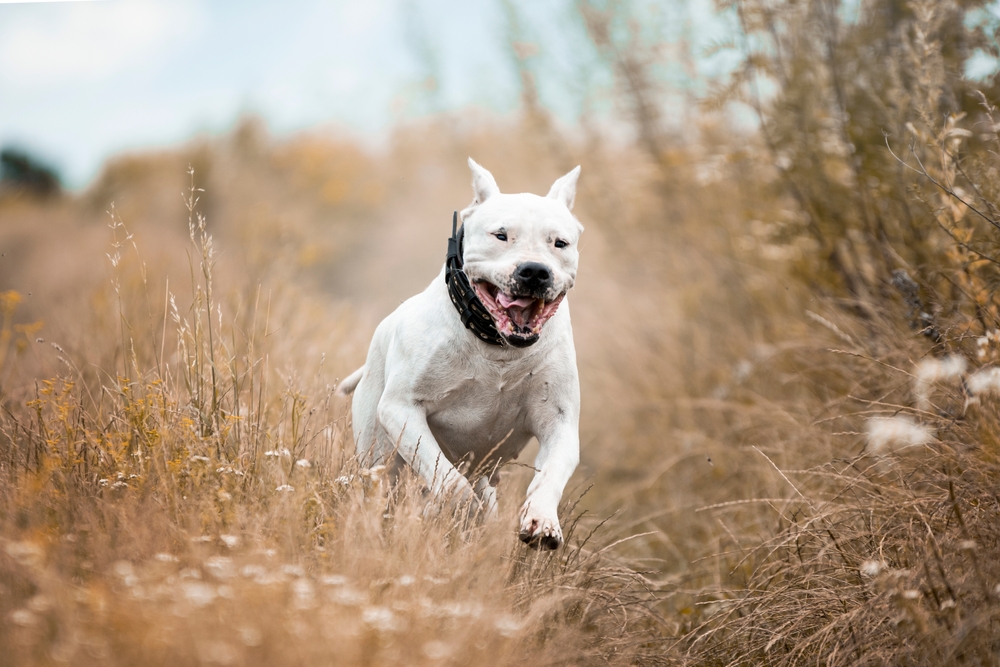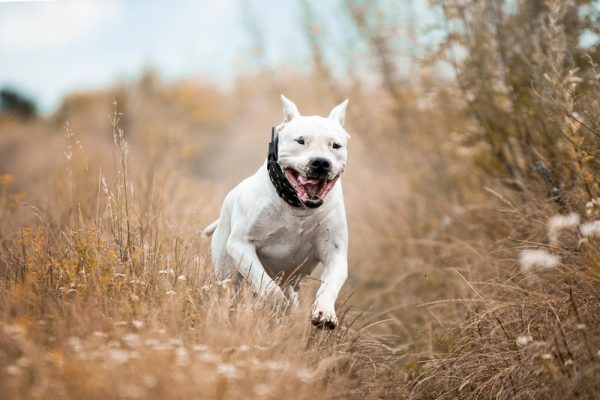Did you know that roughly 4.5 million individuals are bitten by dogs annually, with an average of 43 fatalities? Even more interestingly, deaths increased during the pandemic when people spent more time interacting with their pets at home. Sadly, children and seniors are the most likely victims. And often, the incidents involve familiar animals.
Remember that dogs share a common ancestor with wolves. These canines are carnivores, so it’s not a stretch to think they may be dangerous, with these predatory instincts hard-wired into their DNA. Nevertheless, some breeds are more threatening than others. Humans are partly to blame, though, as we selectively bred some dogs to encourage aggression with unintended consequences.
What Makes a Dog “Dangerous”?
Classifying dog breeds as “dangerous” is subjective since we can look at this question from various aspects. We can look at the size of the animal, yet we can also consider the temperament of the pup. After all, a bit of aggression is desirable in some jobs, such as guarding and herding, as these dogs must act quickly and decisively to protect their charges and themselves.
Environmental factors also play a role in dog behavior, which can determine the threat’s magnitude. We can consider the prevalence of aggression in various breeds. However, the statistics provide an objective point of view on which canine breeds are indeed the ones we should consider as being the most dangerous. Below, however, we are going to take all of this into account. From the dogs who bite the most to the ones who could be dangerous simply because of their bite force, keep reading to learn about the breeds that many people consider “dangerous.”
The 15 Most Dangerous Dog Breeds
1. Akita
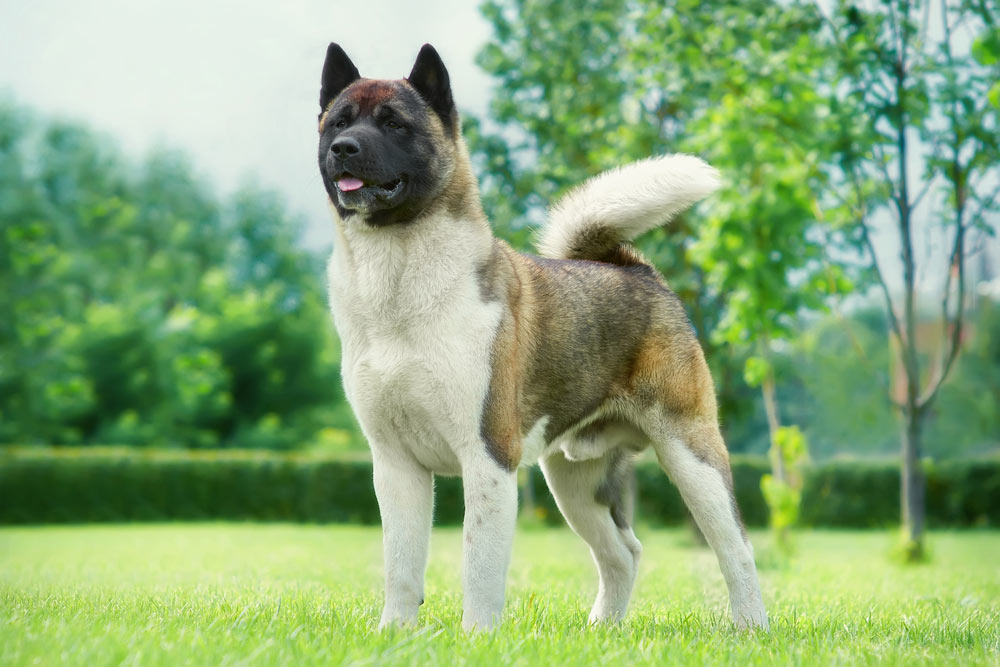
| Origin: | Japan |
| Weight: | 70–130 pounds |
| Height: | 24–28 inches |
The Akita is part of the spitz-type dog group that also includes the Chow Chow and Alaskan Malamute. People selectively bred this pup as a guardian and big game hunter. Consequently, they have a strong prey drive, which may account for their behavior. They are also loyal and hard-working animals with an unmistakable independent streak. One study specifically noted the breed’s increased aggression and territoriality.1
2. American XL Bully Dog
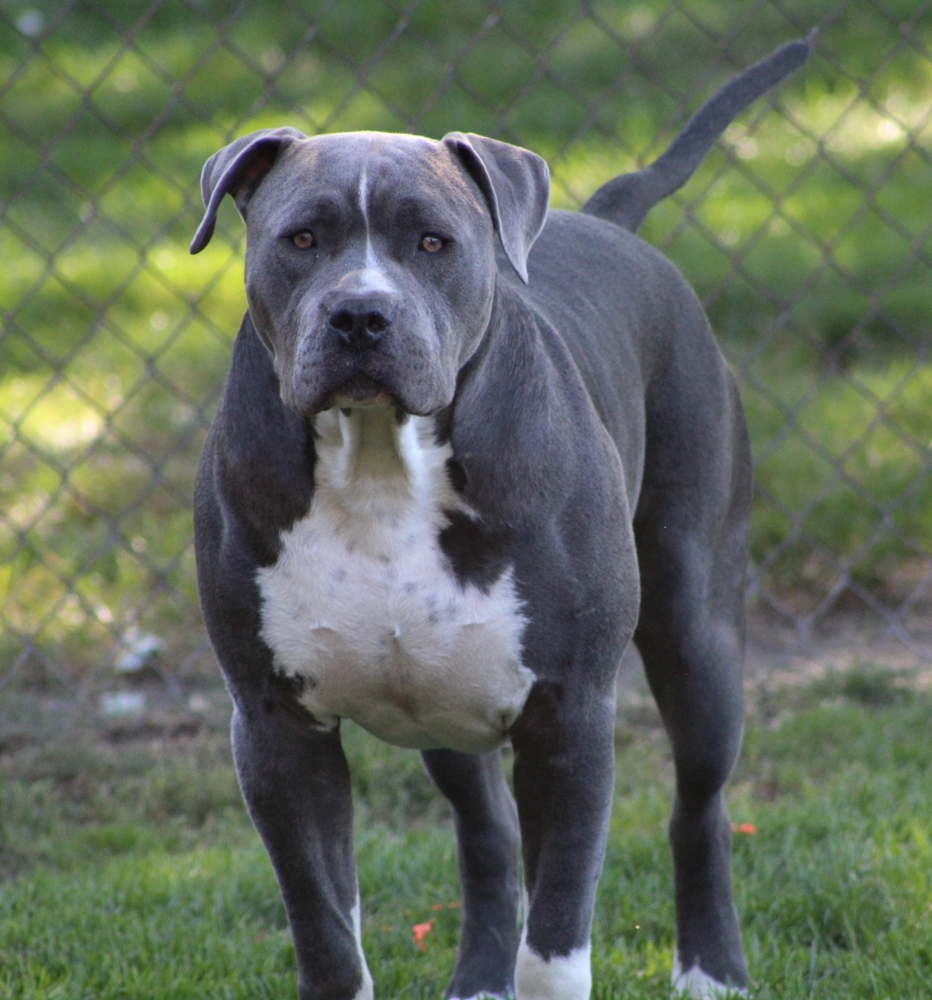
| Origin: | United States |
| Weight: | 44–132 pounds |
| Height: | 19–23 inches |
The American XL Bully Dog is a larger variant of the United Kennel Club’s registered breed. It’s evident that they are muscular canines. Research has shown that an animal’s skull size and morphology are taken into account with its weight affecting its bite force and, thus, danger factor.2 These concerns have prompted Wales and England to enact a ban on this variant because of recent attacks on humans.
3. Boerboel
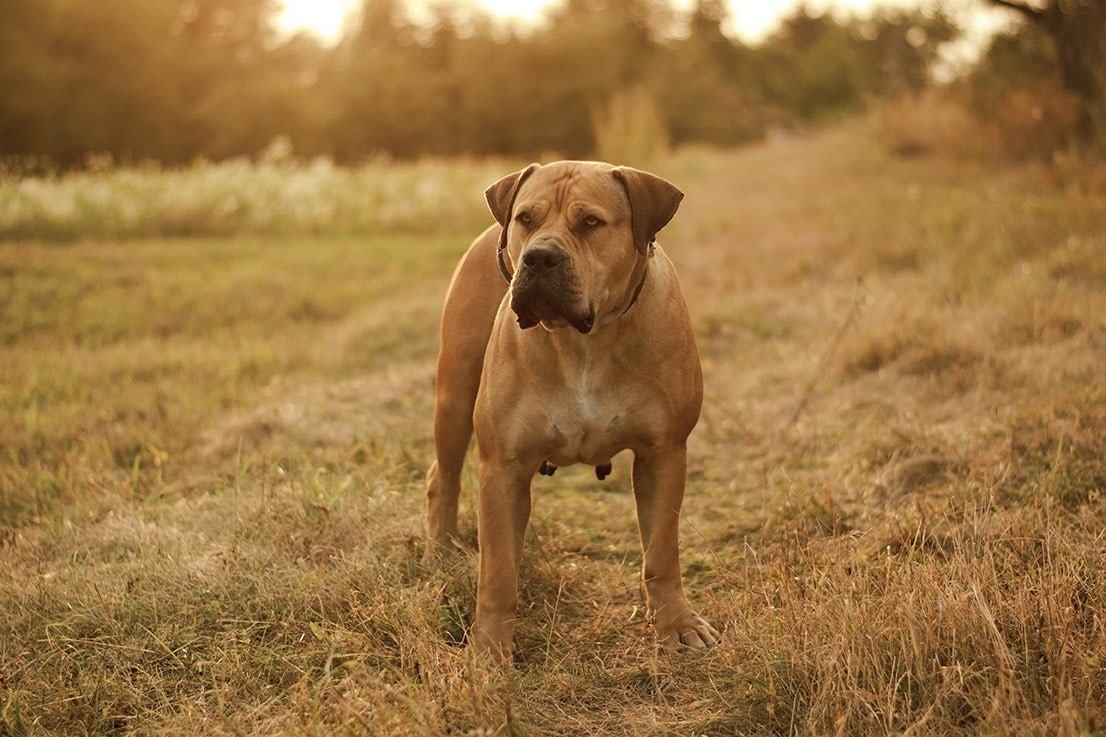
| Origin: | South Africa |
| Weight: | 150–200 pounds |
| Height: | 22–27 inches |
The Boerboel is another massive animal, accounting for their place on this list. Enthusiasts selectively bred this pup with the German Bullenbeisser, a mastiff-like canine, as a guardian of livestock. Research has shown Mastiffs have a PSI bite force of 552.3 In comparison, a human’s figure is about 120 PSI. Remember that the guardian’s job is to subdue intruders, and this pooch has everything they need to perform this task. However, that also makes them a bigger threat than some other breeds.
4. Cane Corso
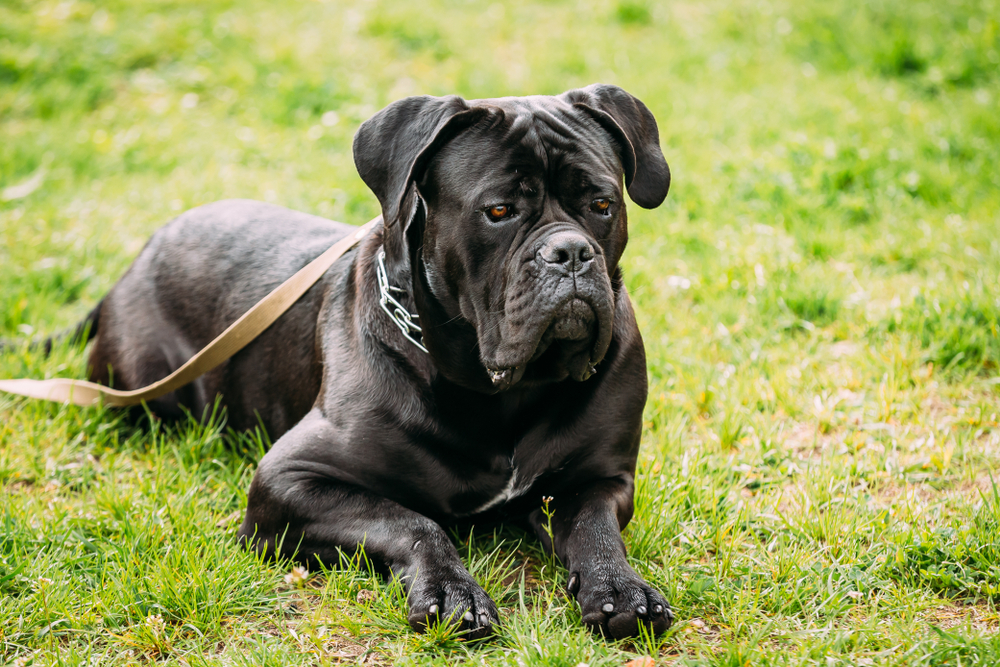
| Origin: | Italy |
| Weight: | 90–110 pounds |
| Height: | 23.5–27.5 inches |
The Cane Corso was also selectively bred as a guard dog and hunting companion. This dog has retained these protective traits, making them dangerous for intruders. The animal’s bite is certainly worse than their bark. They also have their large body and skull size that need to be taken into account. The Cane Corso has a keen prey drive, which is another aspect of the risk factor.
5. Chihuahua
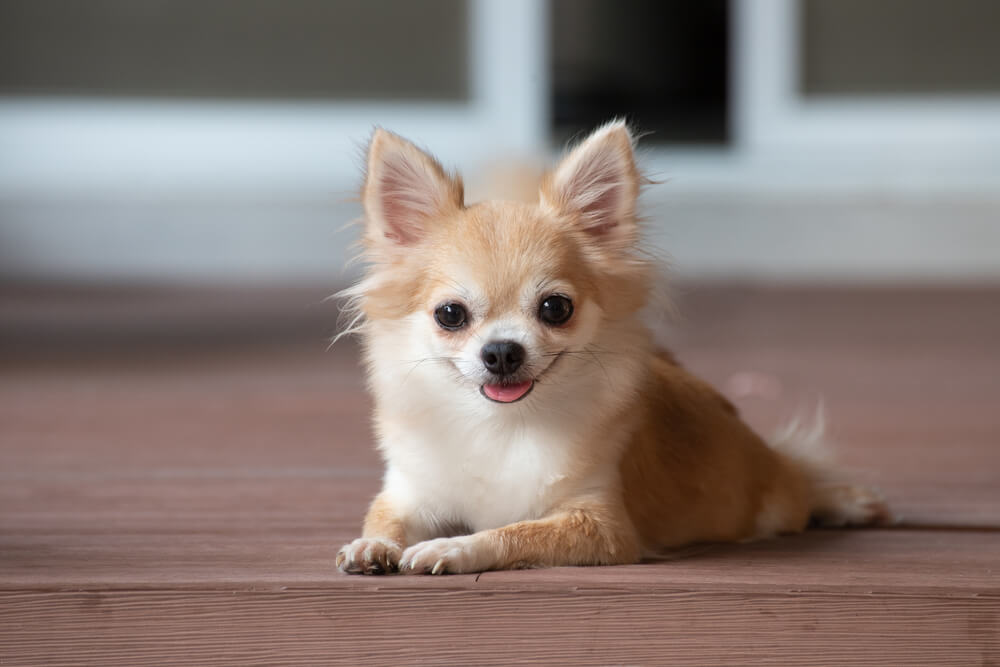
| Origin: | Mexico |
| Weight: | Up to 6 pounds |
| Height: | 5–8 inches |
The Chihuahua being on this list may surprise you. Nevertheless, many small breeds are reportedly fierce, mainly out of necessity. Scientists theorize that a lack of attention may fuel the fire. Their small size may not have spurred selective breeding to eliminate this trait; it may also be genetic. Nevertheless, the data may have some bias because of unreported biting incidents, simply because their bite isn’t known to do much damage.
6. Chow Chow
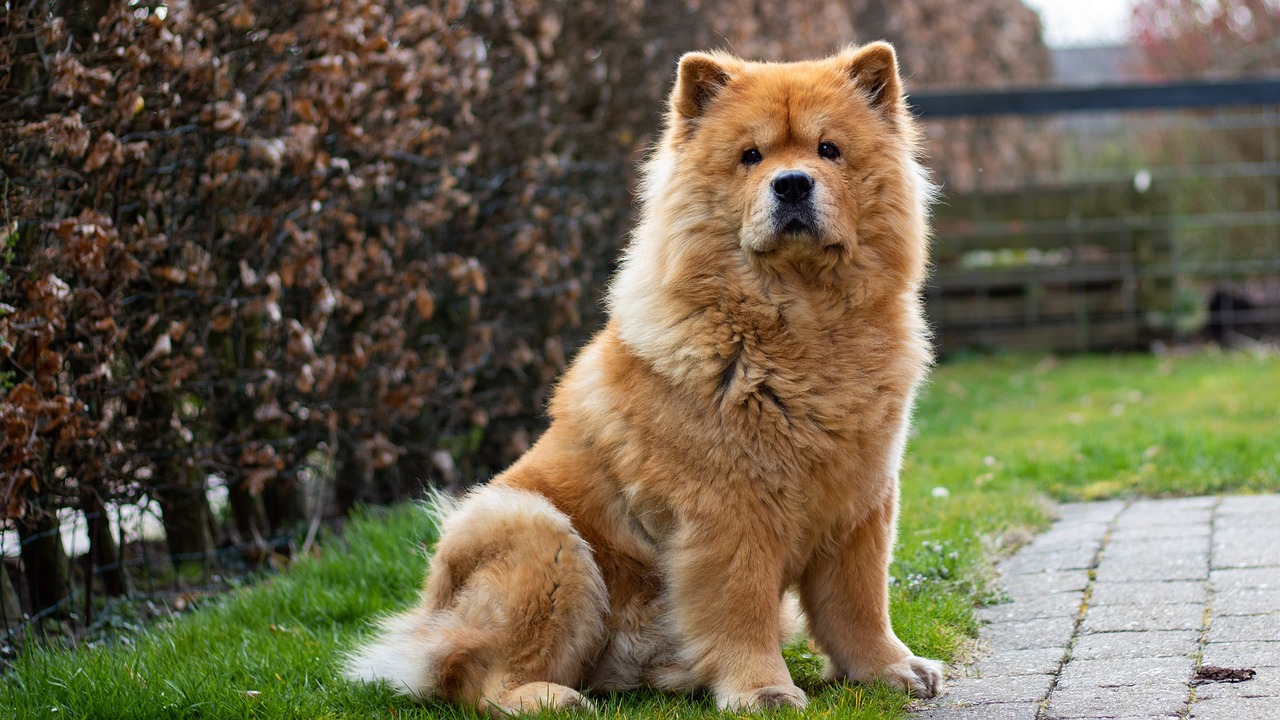
| Origin: | China |
| Weight: | 45–70 pounds |
| Height: | 17–20 inches |
The Chow Chow is another spitz-type dog with an ancient history going back thousands of years. This pup has a distinct cat-like quality about them that’s evident even in puppies. Also, this breed shows up frequently in bite injury statistics. Undoubtedly, the pooch’s teddy-bear-like appearance may lead some people to approach them, thinking they want attention when they really don’t.
7. Collie
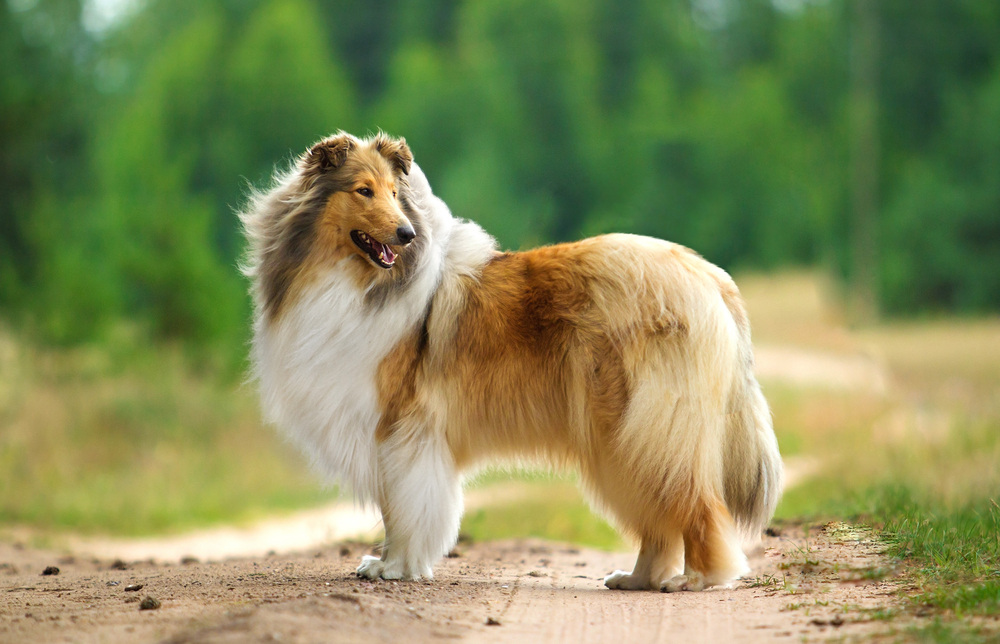
| Origin: | Scotland |
| Weight: | 50–75 pounds |
| Height: | 22–26 inches |
Having the Collie on this list may fly in the face of popular images of the breed, like Lassie. However, a common denominator we found with some dogs is a herding history. These dogs may have worked with animals much larger than them and need to nip at their heels often, thus encouraging biting. That can explain the breed’s place in the biting statistics. Their protective name and natural wariness of strangers may also account for this behavior.
8. Doberman Pinscher
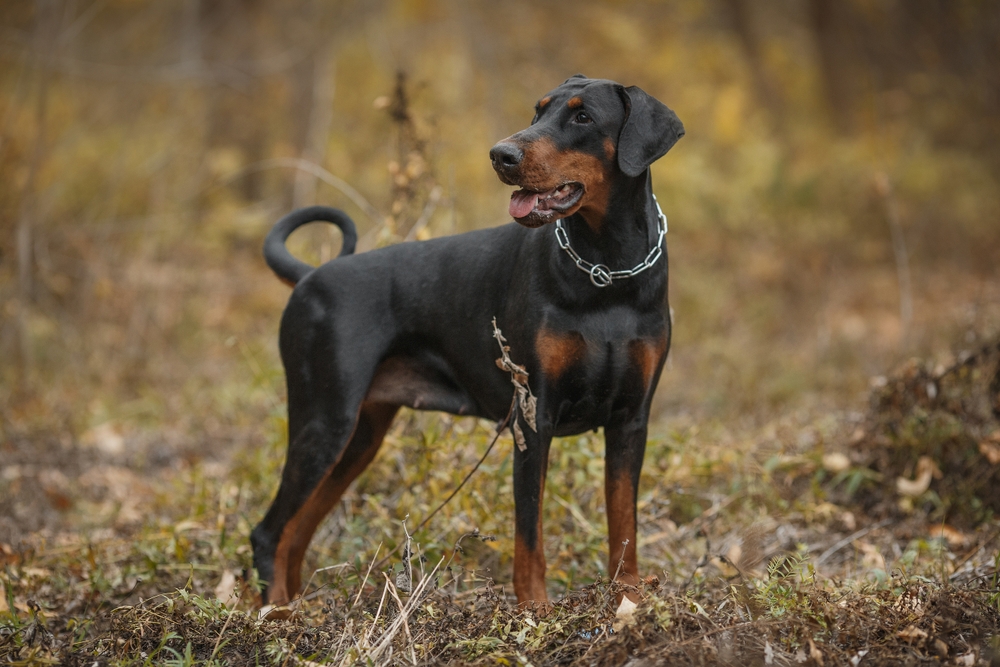
| Origin: | Germany |
| Weight: | 60–100 pounds |
| Height: | 24–28 inches |
The Doberman Pinscher gets their cred from their original job to follow a taxman on their route. This breed is often listed in the statistics of breeds that are involved in fatal dog attacks, with a strong bite to back up the bark with an estimated PSI of 245. This pup is affectionate with their family but has a confident, protective nature, and they are also wary of strangers, which could contribute to their aggression.
9. German Shepherd Dog
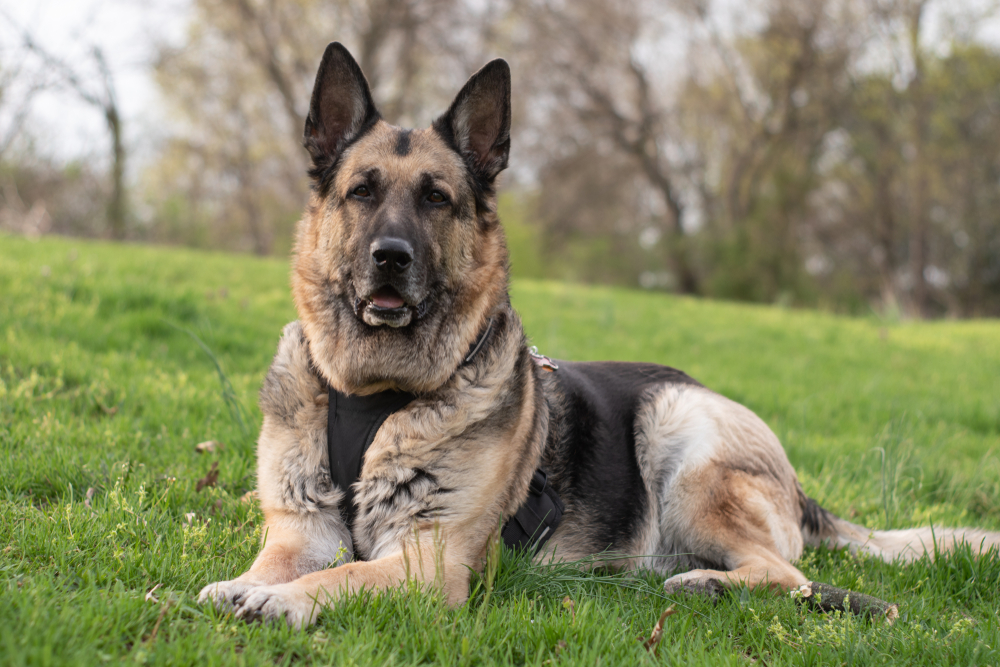
| Origin: | Germany |
| Weight: | 70–130 pounds |
| Height: | 22–26 inches |
There’s an excellent reason that German Shepherd Dogs are one of the top breeds working in the military and law enforcement. They are intelligent animals that are loyal and protective of their charges. They are alert to danger in whatever form it displays. Shepherds are hard-working dogs and won’t waiver from their job. This pup is one that you want on your side, with a bite force of 238 PSI. And with their job comes the task of biting a human from time to time.
10. Gull Dong
| Origin: | Pakistan |
| Weight: | Up to 140 pounds |
| Height: | 18–22 inches |
The Gull Dong’s history includes jobs that put it squarely on this list, including bear hunting and dog fighting. No official organization recognizes this breed. However, that doesn’t detract from their place on this list. This breed is all muscle and able to back up the bark with brawn. Their skull puts them in the Mastiff-type category with their high bite force, and due to being strong-willed and difficult to train, it makes these dogs potentially dangerous, although this breed is very rare in the US.
11. Kangal
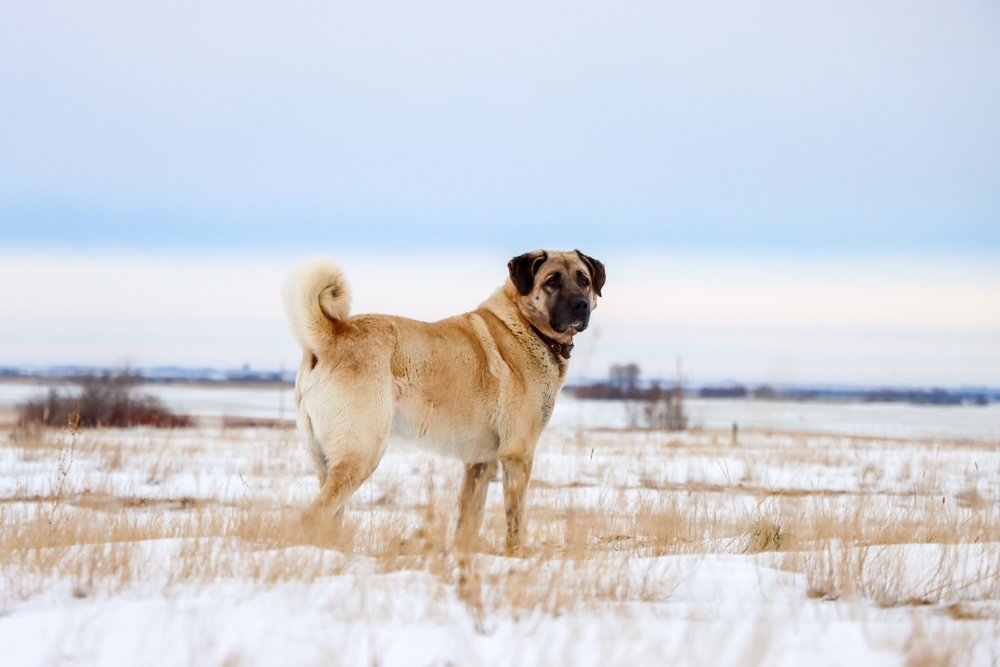
| Origin: | Turkey |
| Weight: | 80–530 pounds |
| Height: | 25–31 inches |
The Kangal or Anatolian Shepherd Dog is a tough dog of the Mastiff type. Thus, they have a significant PSI bite force of 743, which comes from their anatomy and size. This dog acted as a livestock guardian, which nurtured their intelligence, problem-solving skills, and independence. One must also heed the breed’s parent club’s warning discouraging “personal protection training and/or bite work training.”
12. Pit Bull-Type Dogs
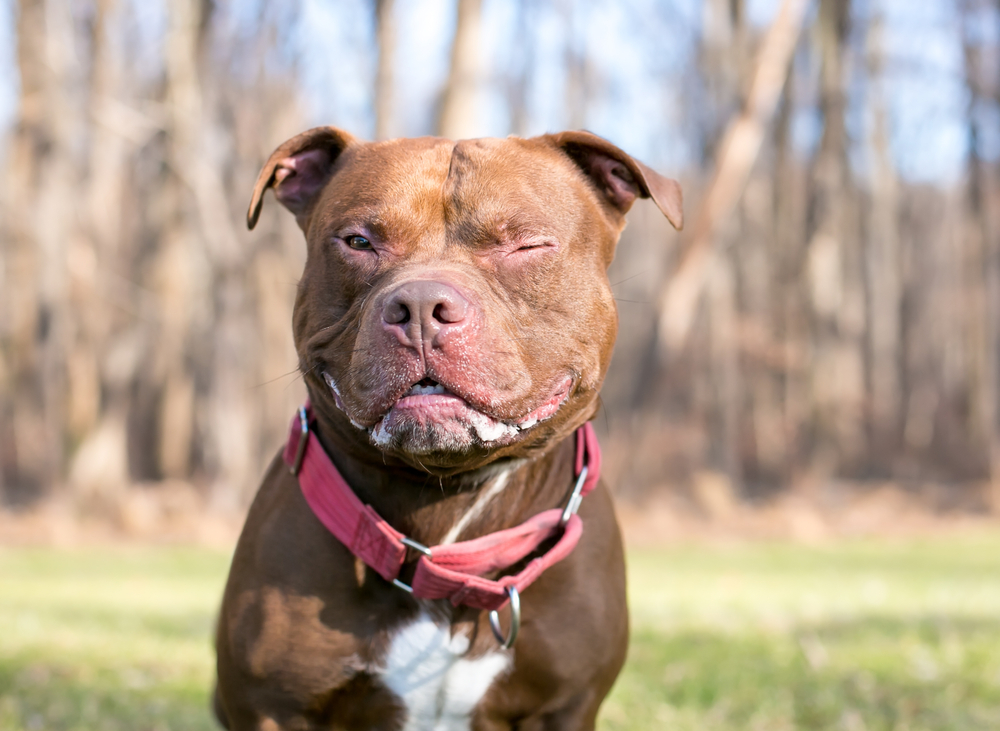
| Origin: | Varies |
| Weight: | Varies |
| Height: | Varies |
The Pit Bull is actually an umbrella term for several different breeds, such as the Staffordshire Bull Terrier, American Staffordshire Terrier, and the American Pit Bull Terrier. Statistics identify these dogs as dangerous. While warranted, the data fails to explain the identification difficulty. Even people in the industry have trouble identifying them correctly, which likely contributes to their bad reputation. Nevertheless, the figures show that these dogs cause the most human fatalities, with over six times more than the second breed.4
13. Presa Canario
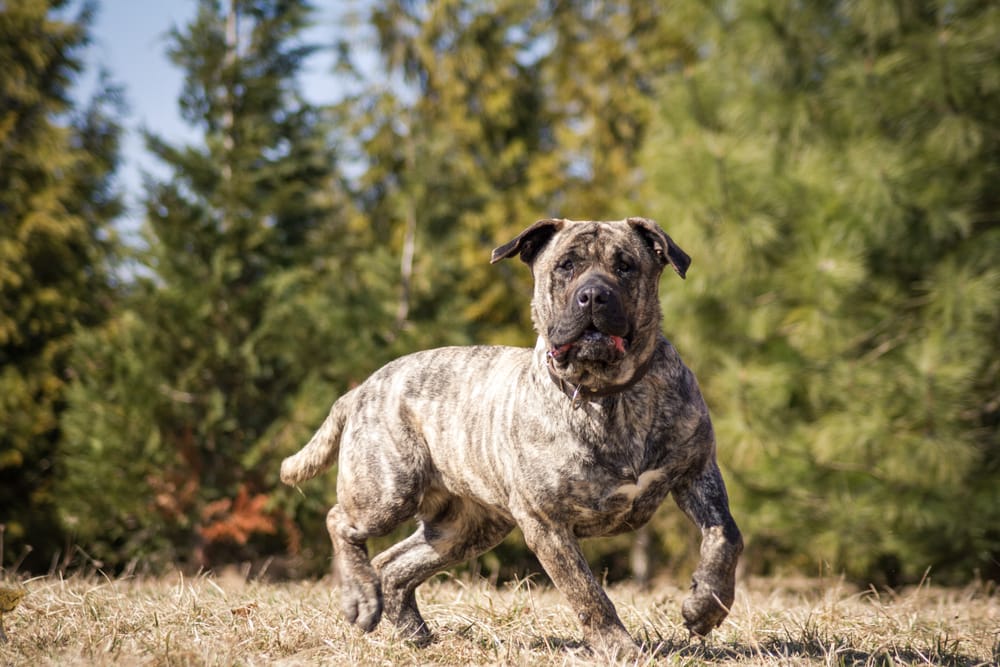
| Origin: | Canary Islands of Spain |
| Weight: | 84–110 pounds |
| Height: | 22–26 inches |
Enthusiasts bred the Presa Canario to be a guardian and cattle driver. They are large, imposing animals with many qualities you’d expect to find in dogs doing these jobs. They are loyal and confident, and these traits extend to their intolerance of other canines.
14. Rottweiler
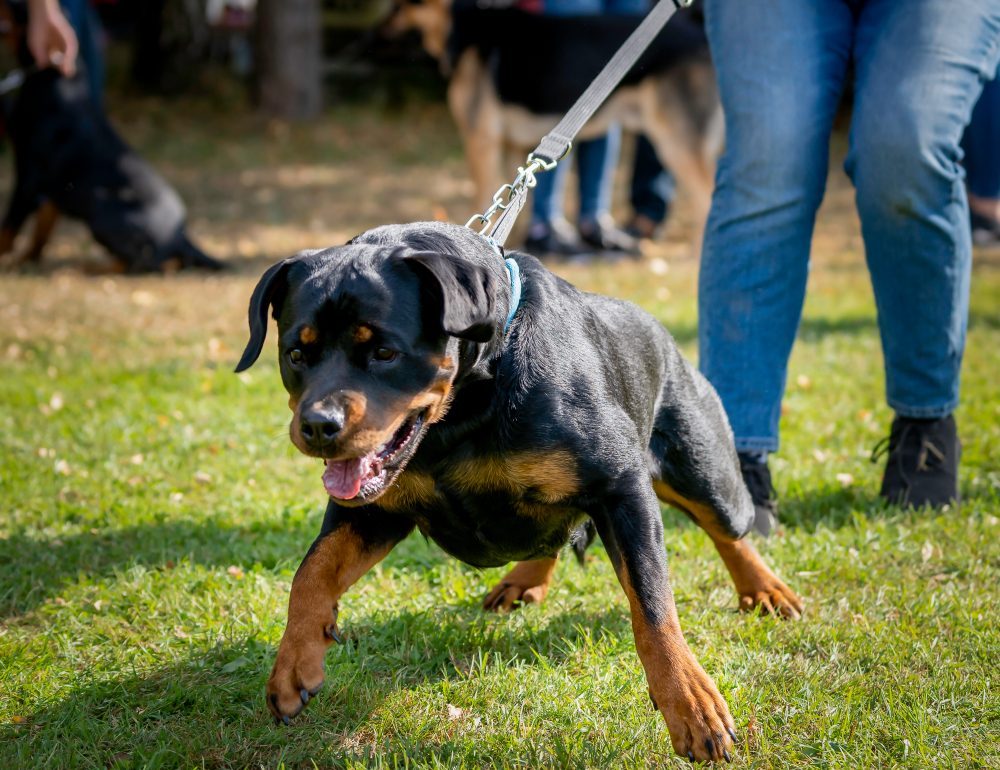
| Origin: | Germany |
| Weight: | 70–130 pounds |
| Height: | 24–27 inches |
The history of the Rottweiler goes back to Roman times. While they worked the fields, you’ll also see them in law enforcement. They are striking animals with their Mastiff-like skull and an impressive bite force. The breed appears frequently in bite injury statistics. It also ranks second for the most human fatalities. This dog is a loyal and confident guardian who takes this job seriously, so you definitely want to stay on their good side.
15. Siberian Husky
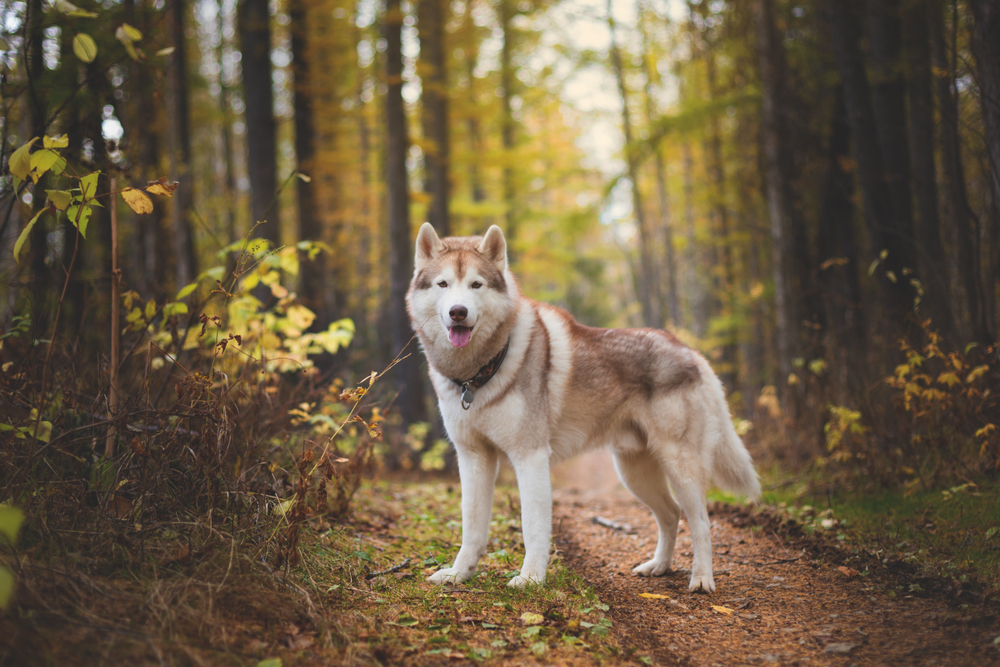
| Origin: | Siberia |
| Weight: | 70–130 pounds |
| Height: | 20–23.5 inches |
While you might think this entry odd, it shows a quirk of statistics. Figures identifying these dogs exist because of the higher prevalence in some data sets where they are more popular as pets. Huskies are energetic and intense animals. It’s not a stretch to think something could happen in the heat of the moment. Remember that sled dogs are used to canine company and roughhousing.
Bonus: Mixed Breeds
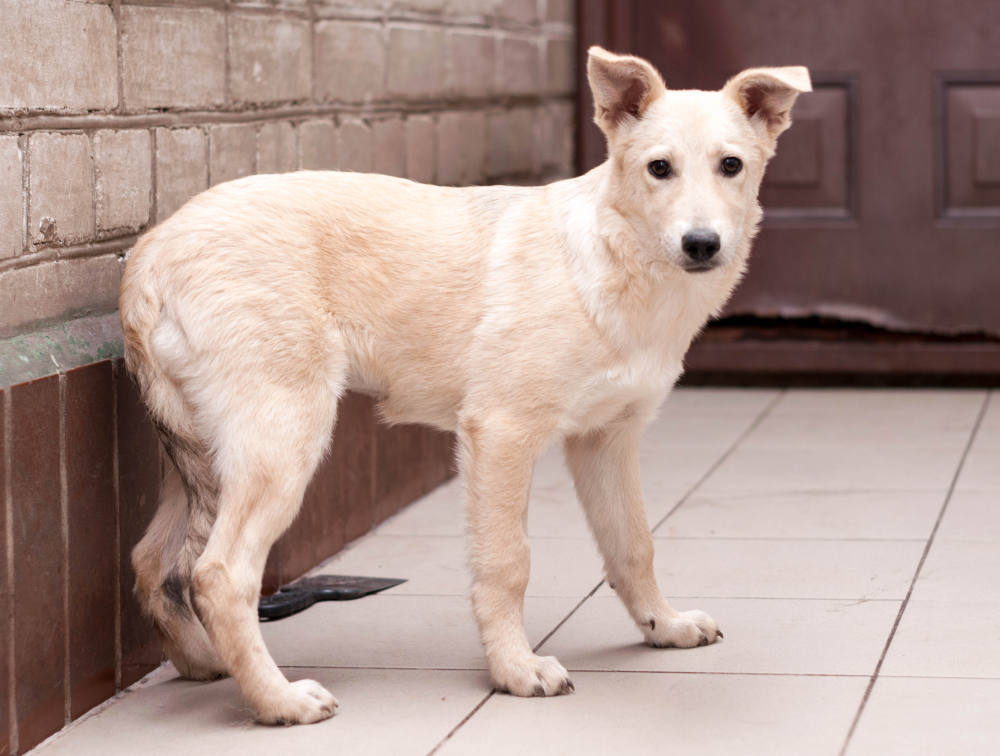
| Origin: | Varies |
| Weight: | Varies |
| Height: | Varies |
Many studies about dog bites cite mixed breeds. After all, many people have mongrels instead of purebred canines. Positively identifying breeds is problematic, especially if more than two are involved. DNA testing can determine some, but it’s not definitive. Nevertheless, these animals appear frequently in bite injury and fatality data.
Undoubtedly, you can spot the problem. Quantifying and analyzing the data is challenging if you don’t know what breeds are involved. Therefore, drawing conclusions that can help breeders identify possible issues is also difficult. Fortunately, screenings such as the ATTS (American Temperament Test Society) Temperament Test can help individuals reduce passing on these undesirable traits.
Factors Affecting Canine Aggression
As we’ve seen, the PSI of the bite force and size isn’t necessarily a predictor of a dangerous dog, although it can assess the degree of risk of an encounter. We can consider it a secondary factor when taken into account with other things that can increase the chances of an aggressive and, therefore, dangerous animal.
We’ve discussed genetics already and know that some jobs require traits that can influence this behavior, which makes these dogs inherently threatening. People still encourage these characteristics with work in law enforcement and the military, and some dogs also have a strong prey drive because they hunt pests. That can manifest in unwanted behavior toward other pets. After all, aggression is normal canine behavior.
We also see undesirable behavior in dogs that weren’t trained or socialized properly. Dogs may develop unwanted behavior resulting from separation anxiety or boredom. Some thoughtless owners may encourage viciousness. That makes some cases of dangerous dogs a social issue. This problem often goes hand in hand with another glaring issue when dealing with this situation.
Breed-specific legislation may have the best intentions at heart, but it fails to solve the problem. Condemning the dogs we associate with risk doesn’t address the real issue; the root lies with irresponsible pet ownership. The law must penalize the individuals who encourage unwanted behavior that often results in dangerous dogs.
Getting puppies under 8 weeks old increases the chances of fearfulness, which can morph into aggression. These animals must spend time with their mothers and littermates to develop properly. Remember that a critical period of socialization occurs at this time. Adverse experiences during this time can have long-lasting consequences, with their young brains still developing.

Conclusion
Any dog can bite, as aggression is part of canine genetics. After all, they are descended from predatory hunters. However, this behavior becomes problematic by human standards when it’s unwanted or dangerous. But remember that people can profoundly impact a pup’s temperament, so that makes proper training and socialization imperative. And remember, while certain statistics might claim that some breeds are more dangerous than others, and it is true to an extent, this often has to do with how a dog was raised, so it’s our responsibility as pet parents to turn our dogs into well-mannered, well-behaved, socialized pets.
Featured Image Credit: Ira Bushanska, Shutterstock
Contents
- What Makes a Dog “Dangerous”?
- The 15 Most Dangerous Dog Breeds
- 1. Akita
- 2. American XL Bully Dog
- 3. Boerboel
- 4. Cane Corso
- 5. Chihuahua
- 6. Chow Chow
- 7. Collie
- 8. Doberman Pinscher
- 9. German Shepherd Dog
- 10. Gull Dong
- 11. Kangal
- 12. Pit Bull-Type Dogs
- 13. Presa Canario
- 14. Rottweiler
- 15. Siberian Husky
- Bonus: Mixed Breeds
- Factors Affecting Canine Aggression
- Conclusion

